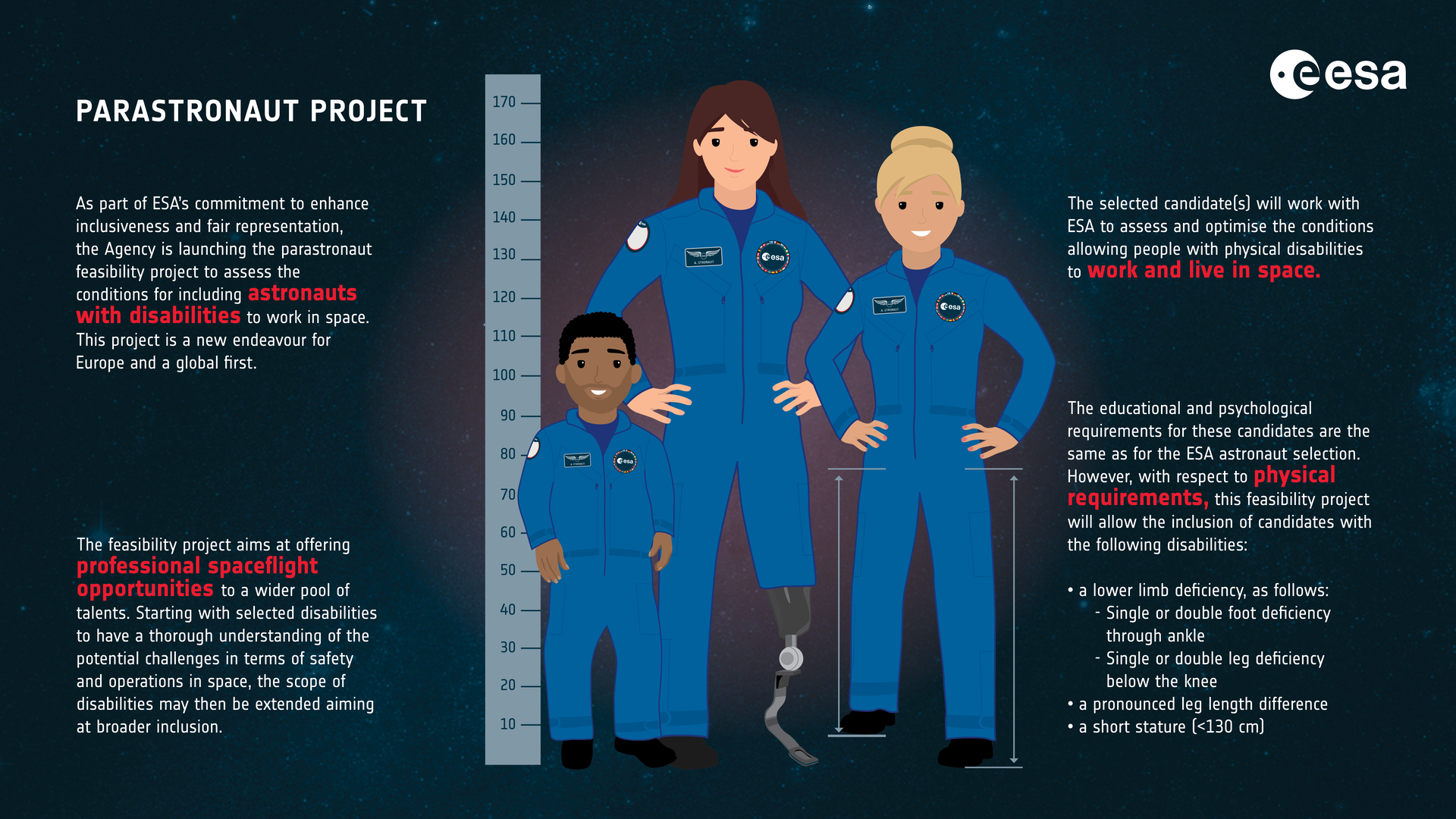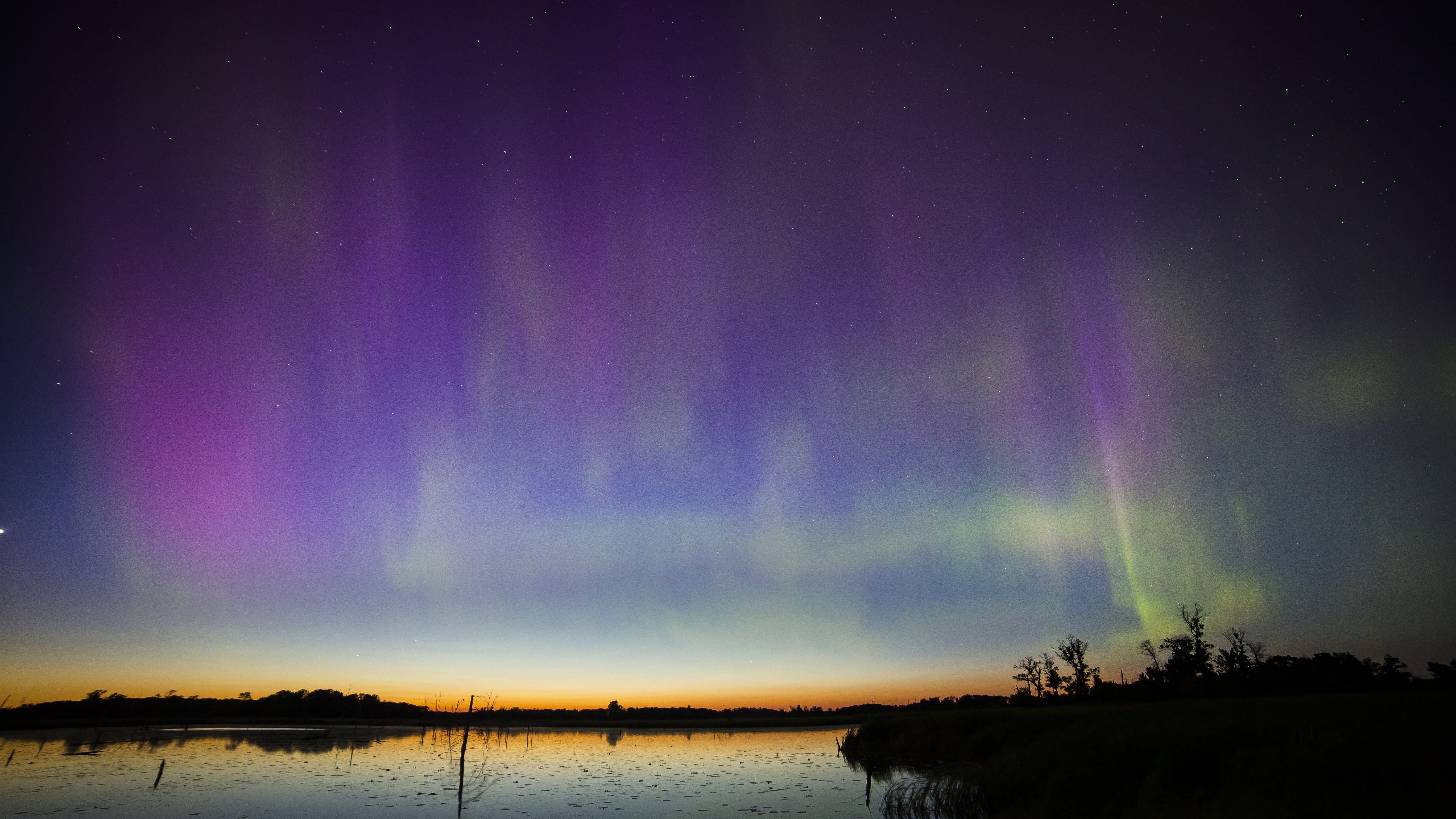European Space Agency announces call for 'parastronauts' with disabilities
The "parastronaut" chosen for this program would be the first disabled astronaut in history.

The European Space Agency is diversifying its astronaut pool with its first call for astronauts that is open to candidates with physical disabilities.
In this call for new astronauts, the agency's first recruitment drive in over a decade, ESA announced that it plans to accept four to six career astronauts (who will be permanent ESA staff) and about 20 "reserve astronauts," who could fly for shorter missions to destinations like the International Space Station.
As part of this call for astronaut applicants, ESA Director General Jan Wörner revealed during a recent news briefing that the agency is aiming to bring its first "parastronaut," or astronaut with physical disabilities, on board, according to SpaceNews.
As part of what it calls the "Parastronaut feasibility project," "ESA is ready to invest in defining the necessary adaptations of space hardware in an effort to enable these otherwise excellently qualified professionals to serve as crew members on a safe and useful space mission," the agency said in a statement, adding that it will open up this opportunity for one or more applicants.
Related: How to become an astronaut

For this parastronaut, who would be the first astronaut with physical disabilities selected not just by ESA but in history, the agency is "looking for individual(s) who are psychologically, cognitively, technically and professionally qualified to be an astronaut, but have a physical disability that would normally prevent them from being selected due to the requirements imposed by the use of current space hardware," ESA added in the same statement.
ESA consulted with the Paralympic Committee to determine exactly which physical disabilities would work consistently with space missions, according to a New York Times. Currently, the agency is accepting applicants with leg amputations, significant differences in leg length or who are very short (typically, space agencies have a height minimum for astronaut candidates), according to the Times, though the agency hopes to expand this opportunity to others in the future.
Breaking space news, the latest updates on rocket launches, skywatching events and more!
After being recruited, astronaut candidates chosen as part of this project would work with the agency to determine what physical accommodations they might need to fly to space.
In pictures: The most memorable spacewalks in history
There are a number of reasons that the agency lists for including applicants with physical disabilities. One reason is that "we believe that exploration is the matter of a collective effort, we need to extend the pool of talents we can rely on in order to continue progressing in our endeavour," ESA shared in the same statement.
Additionally, "visible representation is always important and so therefore we’ve been asking ourselves, what are the barriers preventing us from flying a physically disabled astronaut to the ISS," Wörner said according to SpaceNews.
ESA can not guarantee a flight for any astronaut selected, they added in the same statement. However, the agency expects to recruit one parastronaut to its astronaut reserves as part of this new call for applicants, David Parker, ESA director of human and robotic exploration, said, according to SpaceNews.
In addition to selecting the first astronauts with a physical disability, ESA shared that it will work to "bring innovations and other benefits to the safety and efficiency of future crews," the agency said in the statement.
Additionally, ESA is working to increase diversity within its astronaut pool in more ways than one. ESA recently shared that it is also looking to increase gender diversity within its astronaut pool, stating that they are "strongly encouraging women to apply."
Email Chelsea Gohd at cgohd@space.com or follow her on Twitter @chelsea_gohd. Follow us on Twitter @Spacedotcom and on Facebook.
Join our Space Forums to keep talking space on the latest missions, night sky and more! And if you have a news tip, correction or comment, let us know at: community@space.com.

Chelsea “Foxanne” Gohd joined Space.com in 2018 and is now a Senior Writer, writing about everything from climate change to planetary science and human spaceflight in both articles and on-camera in videos. With a degree in Public Health and biological sciences, Chelsea has written and worked for institutions including the American Museum of Natural History, Scientific American, Discover Magazine Blog, Astronomy Magazine and Live Science. When not writing, editing or filming something space-y, Chelsea "Foxanne" Gohd is writing music and performing as Foxanne, even launching a song to space in 2021 with Inspiration4. You can follow her on Twitter @chelsea_gohd and @foxannemusic.
